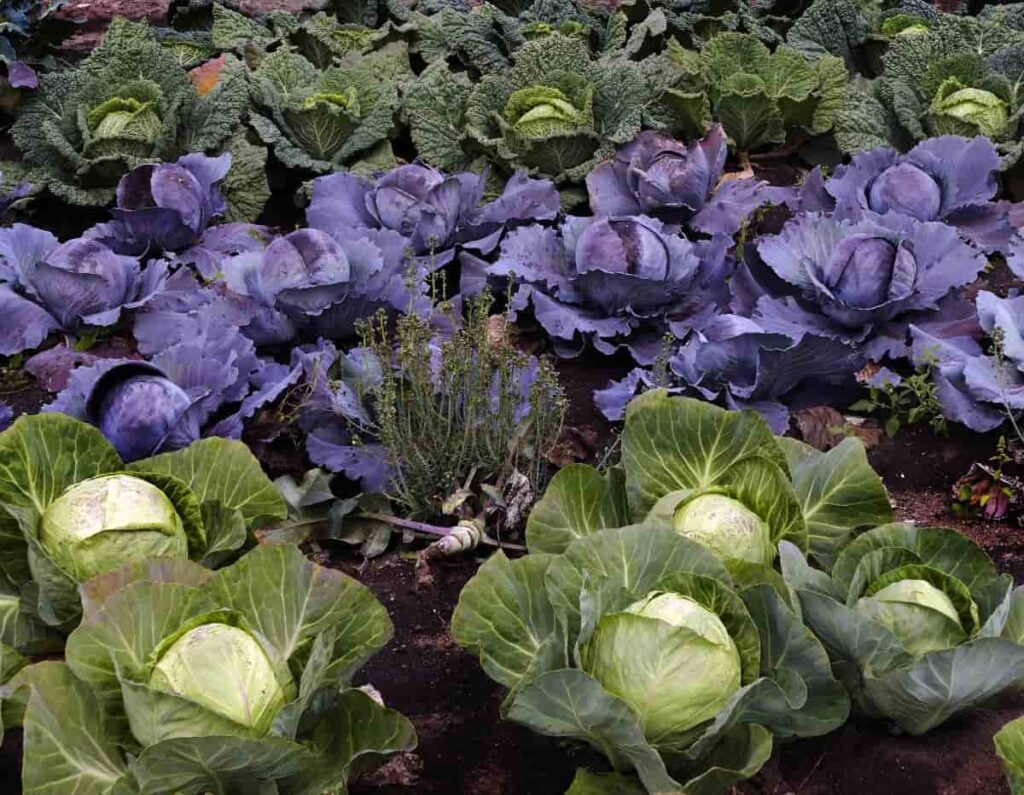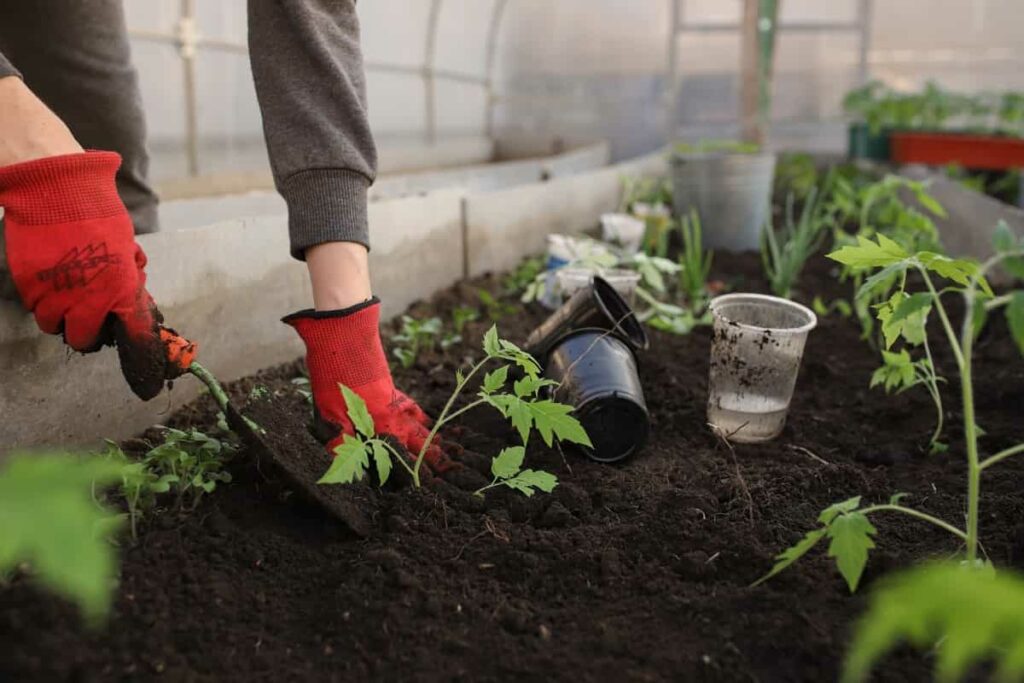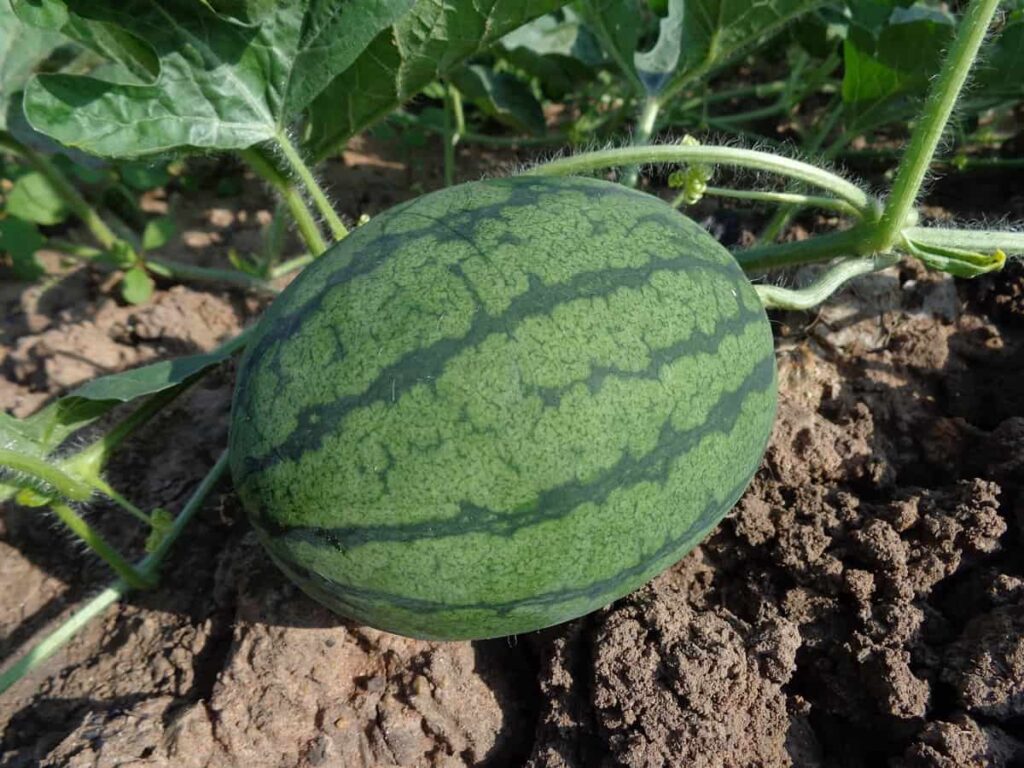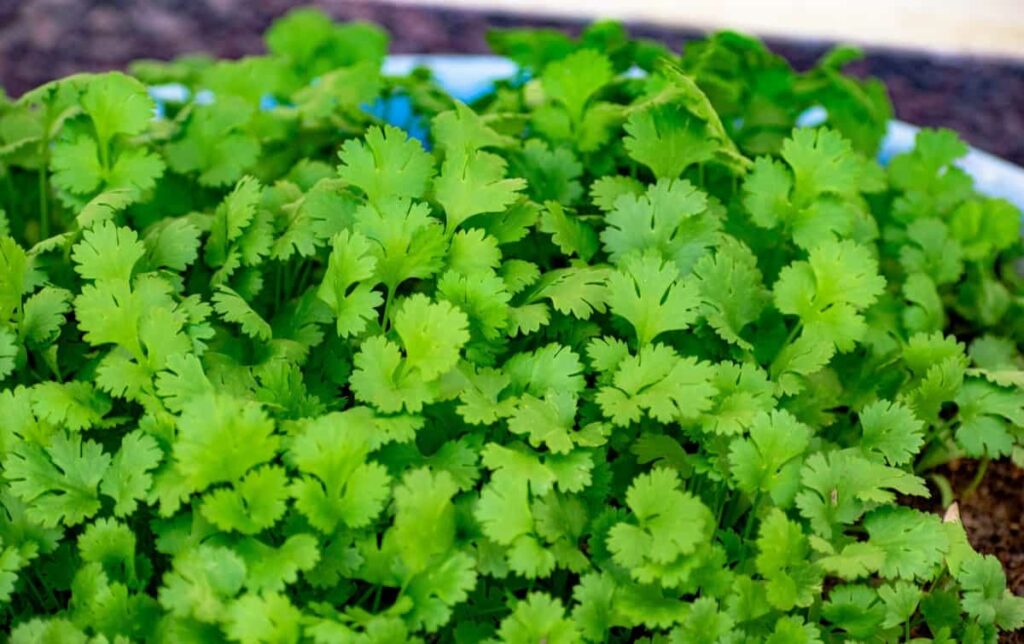Most home gardeners overlook this crucial aspect of plant care. While we make the soil well-drained and add the requisite compost to it, we often forget to measure the pH of the soil. In reality, if the soil pH is not in balance, the plants will not be able to absorb nutrients from the soil and never be in good health. Below we learn the Optimal soil pH charts for vegetables, fruits, flowers, and herbs, the effects of soil pH on plant growth, how to adjust soil pH for vegetables and other plants, and different soil pH charts for Indian home gardens.

Soil pH levels for vegetables, fruits, flowers, and herbs
What is soil pH?
Soil pH indicates acidity or alkalinity. The concentration of hydrogen ions is what the pH scale is based on. On the pH scale (1 to 14 marks), Neutrality is 7, whereas higher numbers indicate acidity. Readings between 7.0 and 14.0 are considered alkaline, whereas those between 7.0 and 7.9 are considered acidic. pH levels in soils typically range from 3.5 to 10. Soil acidity varies from 5 to 7 on average, with a larger range of 6.5 to 9 in drier regions. Acidic soil has a pH below 5.5, whereas neutral soil has a pH between 6.5 and 7.5. Alkaline soil has a pH of more than 7.5.
What is the importance of soil pH?
Microbial activity, fungal development, nutrient availability, and root growth are just a few of the various aspects of soil that are influenced by soil pH. The pH modulates nutrient availability, biological processes, microbial activity, and chemical behavior. This is why measuring and adjusting soil pH is useful in many contexts. Several soil minerals become soluble under acidic environments, releasing hazardous metals like aluminum.
In acidic conditions, the plant has a harder time absorbing nutrients like phosphorus and molybdenum. Minerals, including zinc, iron, copper, manganese, boron, and phosphorus, can be leached out of the soil if the pH is too basic. Since the greatest number of nutrients are accessible between a pH of 6.0 and 7.0, this is the ideal range for most plant growth. Blueberries, on the other hand, thrive in a more acidic environment (pH 4.0-6.0), whereas hyacinths require a more basic pH. (6.5-7.5).
What soil pH is best for vegetables?
Soil acidity is only one of several environmental factors that can affect a plant’s health. The soil’s pH level influences the availability of nutrients. Soils with a mild acidity are ideal for growing vegetables, grasses, and most ornamentals (pH 5.8 to 6.5). Lower or higher than optimal soil pH can reduce plant vitality and cause nutritional shortages. There are three types of nutrients for optimal plant development: primary, secondary, and micronutrients.
Most plants need relatively high amounts of the main nutrients nitrogen (N), phosphorus (P), and potassium (K). Secondary nutrients like calcium (Ca), magnesium (Mg), and sulfur (S) are needed by the plant in lower concentrations than main nutrients like nitrogen (N) and phosphorus (P). In very minute quantities, the plant needs micronutrients such as zinc (Zn) and manganese (Mn). Keeping the soil at the optimal pH is a simple way to address most secondary and micronutrient deficiencies.
Extremes in pH mostly affect plant development because of the concentration of plant-toxic elements in the soil or the availability of plant nutrients. Soils rich in acidity can make aluminum and manganese more readily accessible to the plant, increasing the risk of plant damage. Calcium, phosphorus, and magnesium are less accessible to the plant at low pH levels. Most micronutrients, including phosphorus, become less accessible at a pH of 6.5.
What happens if soil pH is too high?
The health of plants can be negatively impacted by too alkaline soil. Soil rich in alkalinity can make it more difficult for plants to take in water and nutrients, preventing them from reaching their full potential. It can be challenging to make the soil more acidic since water is typically alkaline, and soil limestone decomposes over time, increasing alkalinity. To our relief, there are effective organic strategies for reducing garden soil pH.
You must do a soil analysis to learn about the pH level in your garden. A basic test kit is available at any garden center. These findings will direct your subsequent actions in adjusting the soil. On the pH scale, Neutrality is at 7, whereas higher numbers indicate acidity. Readings between 7.0 and 14.0 are considered alkaline, whereas those between 7.0 and 7.9 are considered acidic. While a pH of 6.5 is recommended for most vegetable gardens, certain plants thrive in a wider range of acidity or alkalinity.
What vegetables do not like acidic soil?
For optimal growth, potatoes thrive in soil that is substantially more acidic, measured as low as 5.1 and as high as 6.0, while kale, lettuce, sweet peas, pole beans, cole crops like cabbage, Brussels sprouts, and broccoli, and radishes need a pH closer to neutral.
In case you missed it: How to Grow Cabbage from Seed to Harvest: Check How this Guide Helps Beginners

What happens to plants if soil pH is too low?
Remember that something’s acidity or basicity can be measured using the pH scale, which ranges from 0 to 14. When talking about pH levels, acidic means below 7.0, basic means above 7.0, and neutral means 7.0. Plants are affected in taking nutrients from the soil when the pH is too low or too high.
This is because plant availability of nutrients peaks within certain ranges. Plants will have trouble receiving nutrients from the soil outside of this range. As soil pH decreases below 6.0, phosphate availability, for instance, decreases sharply. When the pH is more than 7.5, the boron supply quickly depletes.
How do you raise the pH of soil?
As a general rule, lime-containing products are used to amend acidic soils. Most often, limestone has been ground for agricultural use. Calcite’s effectiveness increases with particle size. Adjusting the soil’s pH requires a certain quantity of lime, although that amount varies depending on the soil type. When determining the ideal pH for a growing medium, it is essential to consider the soil’s texture, the amount of organic matter present, and the desired plant species.
For instance, if you want to adjust the soil’s pH but only have lime, you can do it with less of it if the soil is poor in clay. Currently, four distinct forms of crushed limestone are available to gardeners: pulverized, granular, pelletized, and hydrated. Lime that has been pulverized has been crushed to a very fine consistency. When applying lime to lawns, granular or pelletized forms are easier for fertilizer spreaders.
The quicker the soil’s pH is altered, the finer the limestone must be ground. Since hydrated lime can reduce soil acidity more effectively than ordinary limestone, it should be handled with care. Lime has to interact with the soil as much as possible. Adding into the soil is essential for lime reaction since most liming ingredients are only slightly soluble in water. Lime’s pH-adjusting effects will be little even when it’s well combined with the soil.
The lime-soil interaction can’t take place unless there’s water present. Gardens can only be treated by applying it directly to the turf and then watering it. Additionally, wood ashes can be utilized to increase soil acidity. High potassium and calcium levels, along with trace quantities of phosphate, boron, and other elements, may be found in these. Though not as powerful as limestone, they can be used repeatedly to increase the pH level of sandy soil significantly.
It’s best to keep ashes away from young plants and their roots to prevent harm. Put down a little coating in the autumn, and then work it into the soil when spring comes. The usage of wood ashes necessitates yearly testing of the soil’s acidity level. It’s best to avoid using too much wood ash since this can cause the pH level to rise too high and lead to a lack of nutrients.
How do I lower my soil pH?
Soil with pH 6.0 to 7.0 is ideal for growing blueberries and many other acid-loving ornamentals and fruits. When cultivated on soils with high alkalinity, these plants acquire iron chlorosis. Similar signs (a noticeable yellowing of the leaves) are seen in iron chlorosis and nitrogen insufficiency, leading to confusion. Bringing the soil’s pH down helps treat iron chlorosis. Aluminum sulfate and sulfur are two popular compounds used to reduce soil pH.
Aluminum sulfate dissolves in soil and causes acidity, changing the pH immediately. Time is needed for sulfur to be converted to sulfuric acid by soil microorganisms. Sulfur’s conversion rate is affected by many factors, including its fineness, the soil’s moisture and temperature, and the presence of bacteria. A delayed conversion rate of sulfur is possible if these circumstances are not optimal. Due to this, aluminum sulfate is widely used.
Both components should be worked into the soil after application for optimal results. If these substances come into contact with plant leaves, as when treating a garden, immediate removal is required to prevent leaf burn. Be cautious while applying aluminum sulfate or sulfur since too much can have disastrous effects.
What are the signs of poor soil pH in plants?
While a pH pen or meter is the most accurate method to determine whether your plant’s pH is too low or too high, there are certain outward signs you should keep an eye out for. Most people will notice these visual signs of low pH: Reduced capacity for development, Shades of red here and there, and golden and purple patches can be seen on the dark green leaves of some plants. There are also brown patches on the leaves.
To put it another way, leaf necrosis, dead, shriveled, or twisted leaves, burnt leaf tip, blossom end fruit rot, and leaf chlorosis with green veins and yellow leaves. To put it simply, acidic conditions occur at low pH levels (0-7). Most plant species prefer a slightly acidic environment since most nutrients are easily available in this pH range. Too much acidity in the soil can have long-term consequences for your crops.
The pH of your growing environment can change over time, which is another reason to check it often. Several factors might contribute to increased acidity in the soil around your plants. The breakdown of fertilizers and plant waste, the absorption of nutrients by plants, and the release of hydrogen ions can lower soil pH.
Which fertilizer is best for alkaline soil?
You should get a soil test kit to know your soil’s pH level before changing it. Many soil test kits are available, from inexpensive pH strips to more sophisticated pH meters in local Indian garden centers or online. Adding soil amendments is the most natural approach to reducing the pH level of your soil. Put to good use mulch, pine needles, compost, sphagnum peat moss, and even used coffee grounds.
A soil-acidifying fertilizer containing elemental sulfur, such as aluminum sulfate or ammonium sulfate, should be used if the pH level is excessively high. Reduce your application rates of acidifying fertilizer. Fertilizer needs vary depending on soil type, with clay soil requiring more than sandier soils. Protect yourself from acidifying fertilizers by always wearing gloves, goggles, and long sleeves. If at all possible, keep your skin away from it.
A fertilizer service can test your soil to determine how much fertilizer is needed to get it down to an ideal pH level, so it’s better to use their expertise to get the greatest results. Put the soil testing on hold for a bit. Minerals and fertilizers take time to infiltrate the soil and modify its pH level. Slowly add matter or fertilizer to the soil rather than all at once. Incorrect soil acidity correction can lead to problems if not monitored closely.
How do I know if soil is acidic?
In a bowl, combine a couple of teaspoons of soil with a half cup of vinegar. If the addition of the solution causes bubbles, the soil is alkaline. Take a dish that should have some distilled water and two tablespoons of soil in it. Add a half cup of baking soda into the mix. If the solution begins to bubble, the soil is too acidic. The pH of the soil is neutral if none of the two tests produced any significant differences.
When the pH of the soil is either too high or too low, there is a possibility that the plants can suffer from a lack of essential nutrients or experience toxicity. A pH of 7 is considered neutral, and studies have shown that the ideal range for microbial activity and the absorption of nutrients by plant roots is between 5.5 and 7. Below we have the pH chart for plants.
Ideal soil pH ranges for Vegetables in India
| Vegetables | Ideal soil pH range |
| Amaranths | 5.0-8.0 |
| Ash gourd | 5.5-8.5 |
| Beans | 6.0-7.0 |
| Beetroot | 6.0-7.5 |
| Bhindi | 5.5-8.5 |
| Capsicum | 5.0-7.5 |
| Carrot | 5.8-7.0 |
| Cauliflower | 6.0-7.0 |
| Celery | 6.0-7.0 |
| Chilli | 5.0-6.0 |
| Bitter gourd | 4.5-7.5 |
| Brinjal | 5.5-8.5 |
| Broccoli | 6.0-7.0 |
| Cabbage | 5.8-7.0 |
| Lettuce | 6.0-7.0 |
| Onion | 6.0-6.7 |
| Peas | 6.0-7.5 |
| Potato | 4.5-7.5 |
| Cluster bean | 6.5-8.0 |
| Cucumber | 5.5-6.8 |
| Drumstick/Moringa | 4.5-7.5 |
| Fenugrik green | 6.5-8.0 |
| Knol khol | 5.5-7.5 |
| Leak/rose onion | 5.0-7.5 |
| Sweet corn | 5.5-7.5 |
| Sweet potatoes | 5.0-7.0 |
| Tomato | 5.5-6.8 |
| Turnip | 5.0-7.0 |
| Yams | 4.5-7.0 |
| Radish | 5.5-6.5 |
| Ridge gourd | 5.0-7.5 |
| Spinach/palak | 6.0-8.0 |
| Squash | 5.5-6.5 |
| Corn | 5.8-6.2 |
| Okra | 6.0-6.5 |
| Bottle gourd | 6.5-7.5 |
| Apple gourd | 6.5-7.5 |
In case you missed it: 17 Amazing Fruits That Can Be Grown in Pots in India

Ideal soil pH ranges for fruits in India
| Fruits | Ideal soil pH range |
| Watermelon | 6.0-7.5 |
| Banana | 6.5-7.5 |
| Orange | 5.5-7.5 |
| Pineapple | 5.5-6.0 |
| Lychee | 6.0-6.5 |
| Mango | 5.5-7.5 |
| Strawberry | 5.7-6.5 |
| Grapes | 6.5-8.0 |
| Custard apple | 5.5-6.5 |
| Sapota | 6.0-8.0 |
| Lemon | 5.5-7.5 |
| Kinnow | 5.5-7.5 |
| Mosambi | 6.5-7.5 |
| Papaya | 6.5-7.0 |
| Pear | 6.0 – 6.5 |
| Peach | 5.8-6.8 |
| Apple | 5.5-6.5 |
| Figs | 7-8 |
| Plums | 5.5–6.5 |
| Jackfruit | 6.0-6.5 |
| Guava | 5.5-7.5 |
| Pomegranate | 5.5-7.2 |
| Apricot | 6.0-6.8 |
| Apple ber | 5-9 |
| Kiwi | 5.5-7.5 |
| Rambutan | 4.5-6.5 |
| Persimmons | 5.5-6.5 |
| Jamun | 6.5-7.5 |
| Coconut | 5.2-8.0 |
| Pumpkins | 5.5-7.5 |
In case you missed it: 22 Common Problems of Watermelon Plants: How to Fix Them, Solutions, and Treatments

Ideal soil pH ranges for flowers in India
| Flowers | Ideal soil pH range |
| Ageratum | 6.0-7.0 |
| hollyhock | 6.0-8.0 |
| Snapdragon | 6.2-7.0 |
| African daisy | 6-7 |
| China aster | 5.5-7.5 |
| Cockscomb | 6-7 |
| Cornflower | 7.2-7.8 |
| Spider plant | 6.1-6.5 |
| Indian pink | 6.2-6.8 |
| Sunflower | 6.5-8 |
| Balsam | 6.0-7.0 |
| Forget me not | 6.0-8.0 |
| Petunia | 5.4-6.0 |
| Phlox | 6.0-7.0 |
| African marigold | 7.0 – 7.5 |
| French marigold | 7.0 – 7.5 |
| Zinnia | 5.5-7.5 |
| Rose | 6-6.5 |
| Lotus | 6.0-7.0 |
| Dahlia | 6.0-7.5 |
| Plumeria | 6.5-7.0 |
| Lily | 5.5-6.5 |
| Daisies | 6.0-8.0 |
| Iris | 6.0-7.0 |
| Pansies | 6.0-6.2 |
| Poppy | 6.0-7.0 |
| Canna | 6.0-7.5 |
In case you missed it: How to Grow Marigold Flowers from Seed to Harvest: A Planting Guide for Beginners

Ideal soil pH ranges for herbs in India
| Herbs | Ideal soil pH range |
| Cumin | 6.5-8.5 |
| Coriander | 6.5-7.5 |
| Fenugreek | 6-7 |
| Mustard | 6.0-7.5 |
| Holy basil | 6-7.5 |
| Ginger | 5– 7.5 |
| Turmeric | 4.5-7.5 |
| Lemon grass | 4.5-7.5 |
| Parsley | 5.5-6.7 |
| Sage | 5.5-8 |
| Curry leaves | 5.6-6 |
| Dill | 6.5–7.0 |
| Mint | 6-8.2 |
| Oregano | 6.7-7.0 |
| Rosemary | 5.5-7 |
| Thyme | 5.5-8.0 |
| Tarragon | 6.0-7.3 |
| Chives | 6.0-7.0 |
In case you missed it: Grow Bag Size Chart in India: For Vegetables, Herbs, and Fruits

Conclusion
A local nursery sells affordable soil test kits, digital soil pH meters, and pH testers to detect soil pH in India. A test tube, testing solution, and color chart make up soil test kits, which are easily accessible. Putting your soil sample in the test tube, adding the correct quantity of solution, shaking it up, and waiting an hour should get accurate results. The soil’s pH can be determined by matching the solution’s color to the color chart. Depending on the outcome, the next step can be taken. With this, you can find the pH of your soil. Have fun gardening.
- Broccoli Seed Germination and Selection
- Asparagus Seed Germination and Variety Selection
- Seasonal Flower Gardening: Best Practices for Spring, Summer, Fall, and Winter
- How to Grow Hibiscus from Flower
- Plantation Ideas for Home Decoration: A Beginners Guide
- Flower Garden Designs and Layouts for Beginners
- Planting and Spacing Techniques in Papaya: A Beginner’s Guide
- Growing Gold: Essential Techniques for Planting Pineapples
- How to Make Kalanchoe Plant Bushy: Home Remedies and Solutions
- 11 Reasons Why Your Gardenia is Not Blooming: Home Remedies and Solutions
- Eco Elegance: The Guide to Designing a Drought-Tolerant Landscape
- Gardening on a Slope: Strategies for Hillside Landscaping
- Nourish and Flourish: Top Organic Mulches for Thriving House Plants
- Everything You Want to Know about Indian Mogra Flower: Discover Uses and Growing
- Green Thumb Success: Expert Tips for Cultivating Greenhouse Pumpkins All Year Round
- Maximize Growth & Flavor: The Ultimate Guide to Companion Planting in Herb Gardens
- How to Control Rhododendron Problems Naturally: Home Remedies and Organic Ways to Fix Them
- Natural Magic: The Remarkable Benefits of Cinnamon for Plants
- Best Steps to Revive Dying Tulip with Natural and Organic Treatment
- 10 Reasons Why Your Angel Trumpet is Not Blooming: Remedies and Treatment
- How to Fix Periwinkle Leaf and Flower-Related Problems: Natural Remedies and Solutions
- How to Fix Zinnias Leaf and Flower Problems: Discover Natural and Home Remedies
- Organic Steps to Induce Lemon Tree Flowers: A Comprehensive Guide
- Bloom Booster: Crafting the Perfect Homemade Bougainvillea Fertilizer
- Optimizing Growth: A Guide to Applying NPK Fertilizer for Potted Plants
- 10 Best Homemade Fertilizers for Rubber Plant: DIY Recipes and Application Method
- How to Boost Female Pumpkin Flowers: Effective Steps for More Flowers and High Yields
- Transform Your Indoor Garden: Top Benefits of Pink Salt for Houseplants
- 10 Best Homemade Fertilizers for Peacock Plants (Calathea): Easy DIY Guide
- Unlock Blooms: 9 Reasons Why Your Potted Chrysanthemum is Not Blooming
- 8 Reasons Why Your Potted Hibiscus is Not Blooming: Fix it with Simple Solutions
- Unlock Blooms: 9 Key Reasons Your Potted Frangipani Won’t Flower
- 10 Reasons Why Is My Ice Plant Not Blooming: Remedies and Treatment
- 10 Reasons Why My Potted Hydrangea Not Blooming: Treatment and Remedies
- 10 Reasons Why is My Wisteria Not Blooming: Remedies and Treatment
- 10 Reasons Why is My Goldfish Plant Not Blooming: Remedies and Treatment